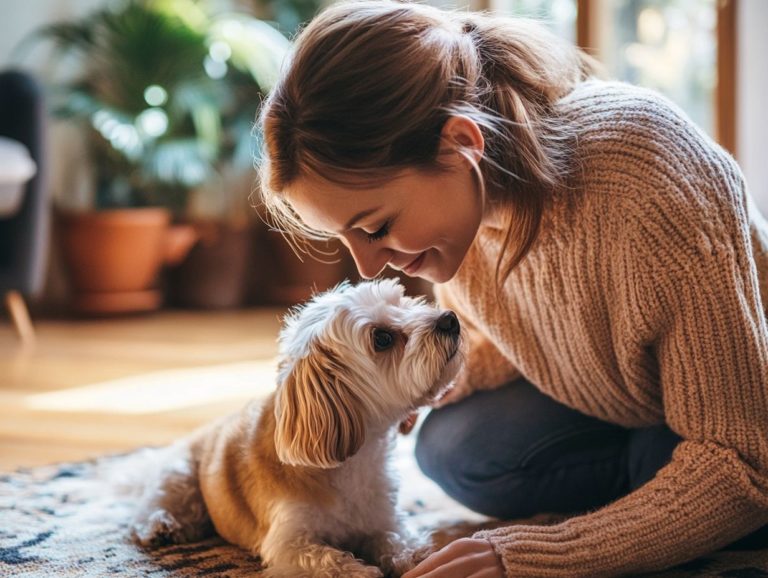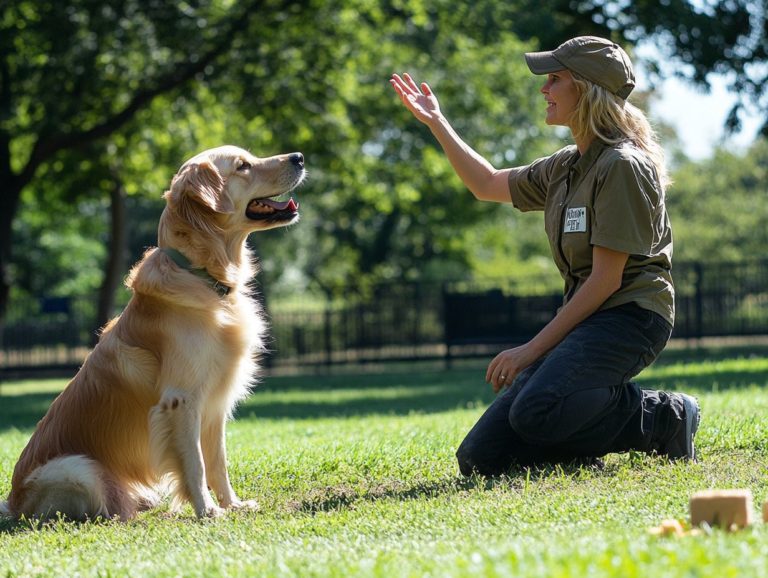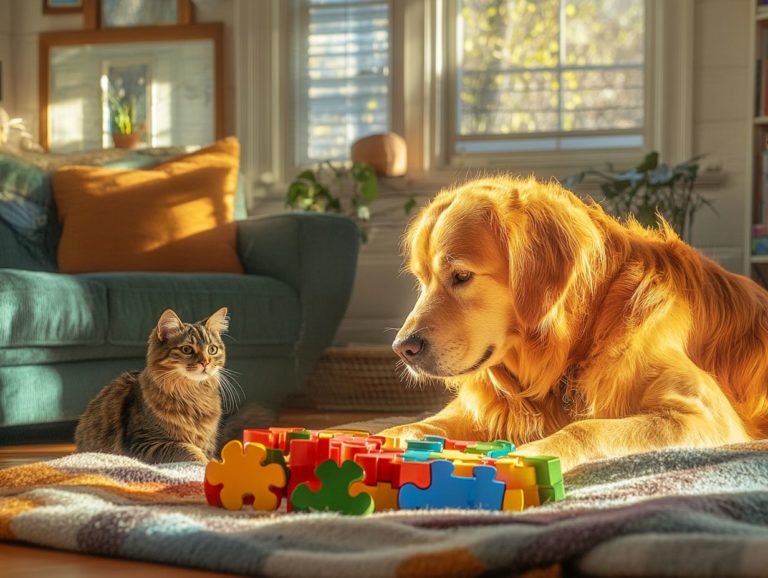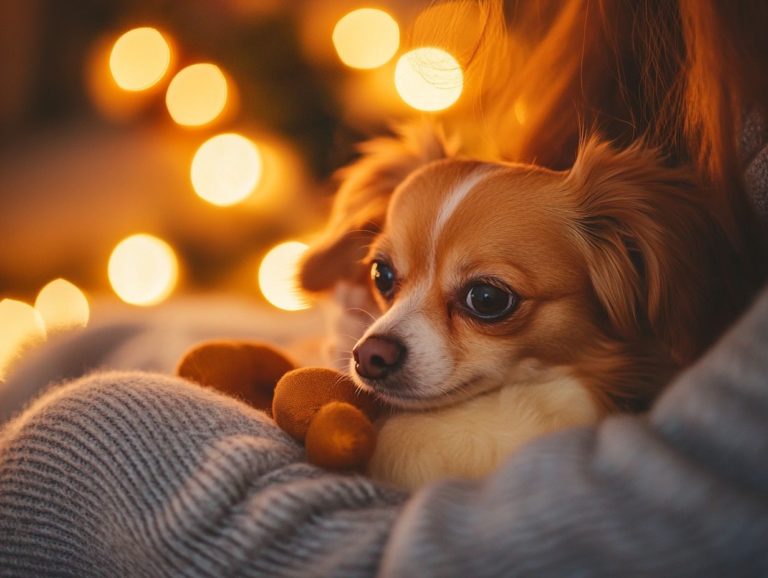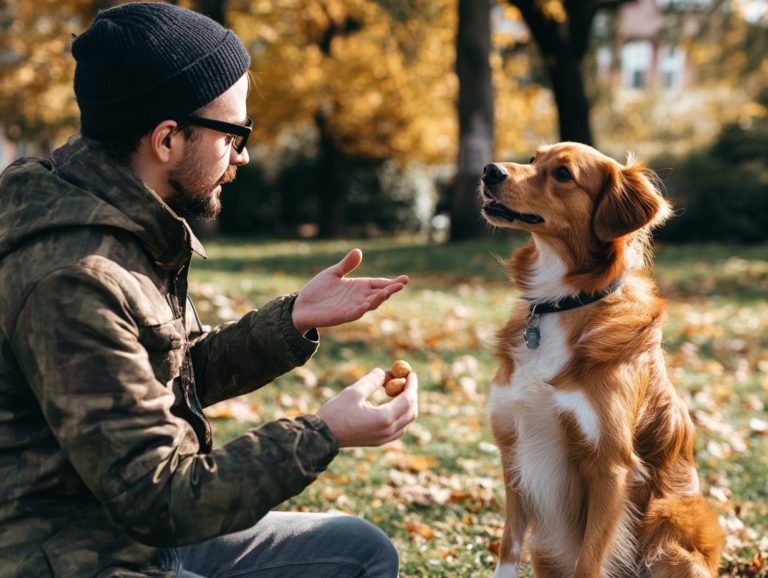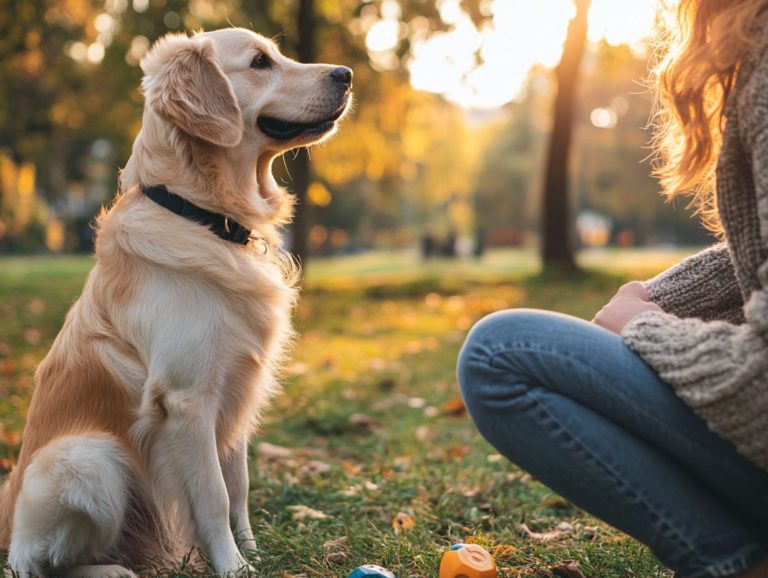How to Use Rewards to Train Anxious Pets
Training anxious pets, especially puppies and dogs, can indeed pose a challenge, but adopting the right approach can transform the experience.
This article delves into the power of rewards in pet training, illustrating why they are so effective in nurturing positive behaviors. You ll discover common anxiety triggers in dogs, learn how to select the ideal rewards, and gain access to a step-by-step guide for crafting a personalized training program.
You ll also find insights on potential setbacks and tips for maintaining positive reinforcement during training.
Let’s dive in together to help your pet thrive!
Contents
- Key Takeaways:
- The Role of Rewards in Pet Training
- Understanding Anxiety in Pets
- Choosing the Right Rewards for Anxious Dogs
- Creating a Reward-Based Training Plan
- Dealing with Setbacks and Challenges
- Maintaining Positive Reinforcement in the Long Term
- Frequently Asked Questions
- How can I use rewards to train my anxious pet?
- What are some examples of rewards I can use to train my anxious pet?
- How often should I reward my anxious pet during training?
- What should I do if my anxious pet doesn’t seem interested in the reward?
- Can I use rewards to train my anxious pet to overcome specific fears?
- Is it possible to rely too much on rewards when training anxious pets?
Key Takeaways:
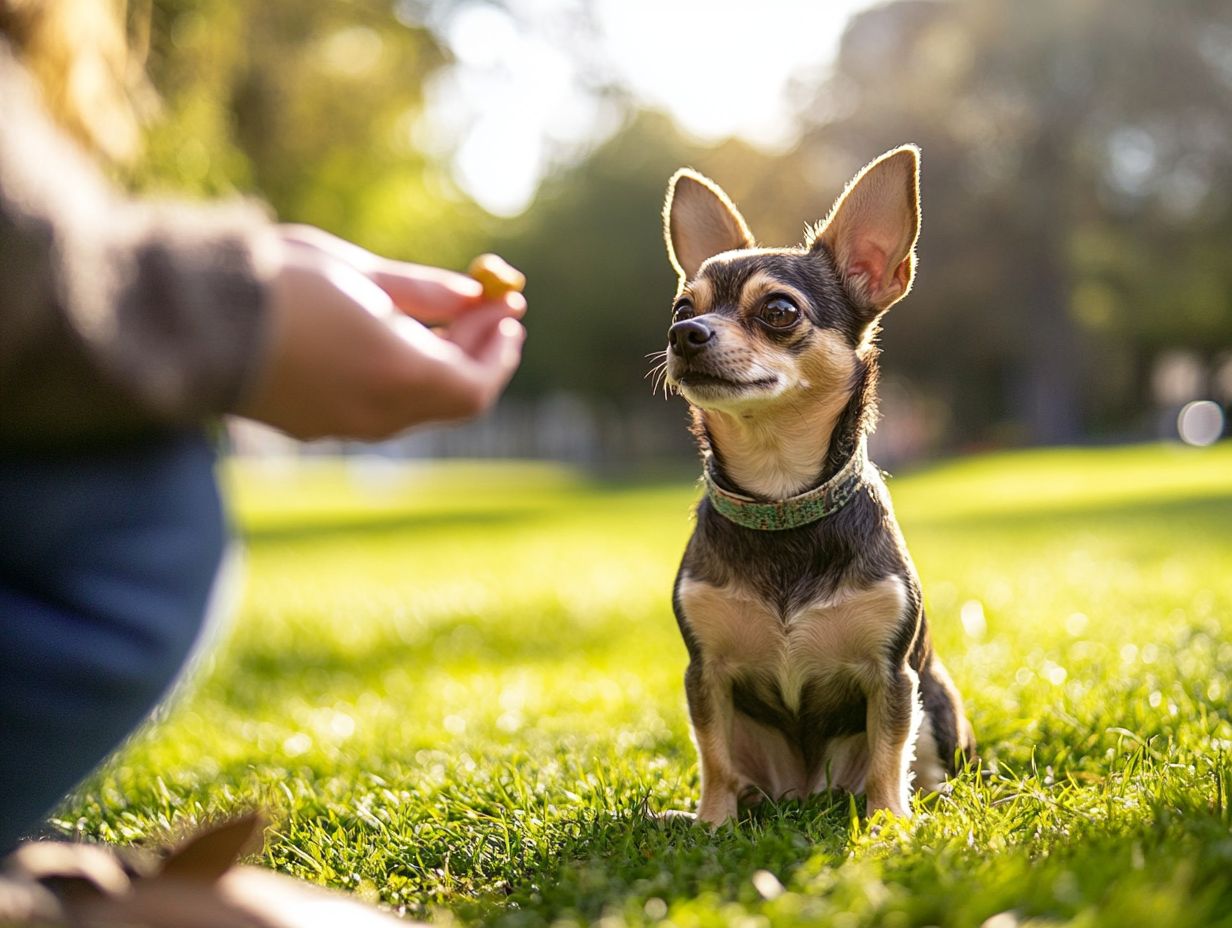
- Rewards are an effective tool for training anxious pets because they help reinforce positive behaviors and build a stronger bond between pet and owner.
- Understanding the common triggers and behaviors associated with anxiety in dogs is crucial to choosing the right rewards for training.
- A step-by-step reward-based training plan can be created to help anxious pets overcome their fears and develop more positive behaviors, but it is important to be patient and prepared for setbacks.
The Role of Rewards in Pet Training
The role of rewards in puppy and dog training is essential for helping you train your dog better. By utilizing rewards, you not only motivate your furry friend during training sessions but also reinforce the behaviors you want to encourage, fostering a positive environment where your dog can flourish.
By employing a range of techniques, including clicker training, you can enhance your canine s grasp of cues and commands. This results in exciting and engaging training experiences. When you use rewards consistently, you strengthen the connection between you and your pet. This ultimately alleviates stress and anxiety during training sessions for both of you.
Why Rewards are Effective
Rewards are important because they help dogs learn desirable behaviors through positive reinforcement.
When your dog receives a reward for a specific action, it fosters a positive association that significantly boosts motivation and enhances learning. Dogs are more inclined to repeat behaviors that result in pleasant outcomes, transforming training into a more engaging experience for both of you.
By recognizing your dog’s unique play style, including their preference for fetch toys or tug toys, you can greatly enhance the effectiveness of these training techniques. For example, if your dog enjoys fetching, incorporating a game of retrieve as a reward can lead to heightened engagement and more consistent behavior modification.
This personalized approach not only builds trust between you and your dog but also nurtures a deeper bond grounded in mutual understanding.
Understanding Anxiety in Pets
Understanding anxiety in pets is crucial for you as an owner seeking to cultivate a calm and supportive training environment. Anxiety can profoundly influence your dog’s behavior and their interactions with you.
By recognizing common signs of stress such as barking, trembling, or avoidance you enable yourself to tackle these issues head-on. Learning to interpret your dog s body language allows you to pinpoint triggers and adapt your training methods accordingly, fostering a positive learning atmosphere.
This insight not only enhances the effectiveness of your training but also deepens the bond between you and your pet, ensuring a happier, more confident canine companion.
Common Triggers and Behaviors
Common triggers for anxiety in pets can include loud noises, unfamiliar environments, or interactions with other animals. These can lead to behaviors such as excessive barking, hiding, or destructive actions.
For example, a sudden clap of thunder might send a dog trembling and seeking refuge under furniture. A visit to a new park could provoke nervous pacing or an aversion to play. Understanding these cues is essential, as dogs express their emotions through body language. Ears pinned back, tails tucked, or avoiding eye contact can all indicate distress.
By staying attuned to these signs, you can adjust your approach. Use calming techniques or gradually introduce stressors to create a more comfortable environment for your beloved dog during training.
Choosing the Right Rewards for Anxious Dogs
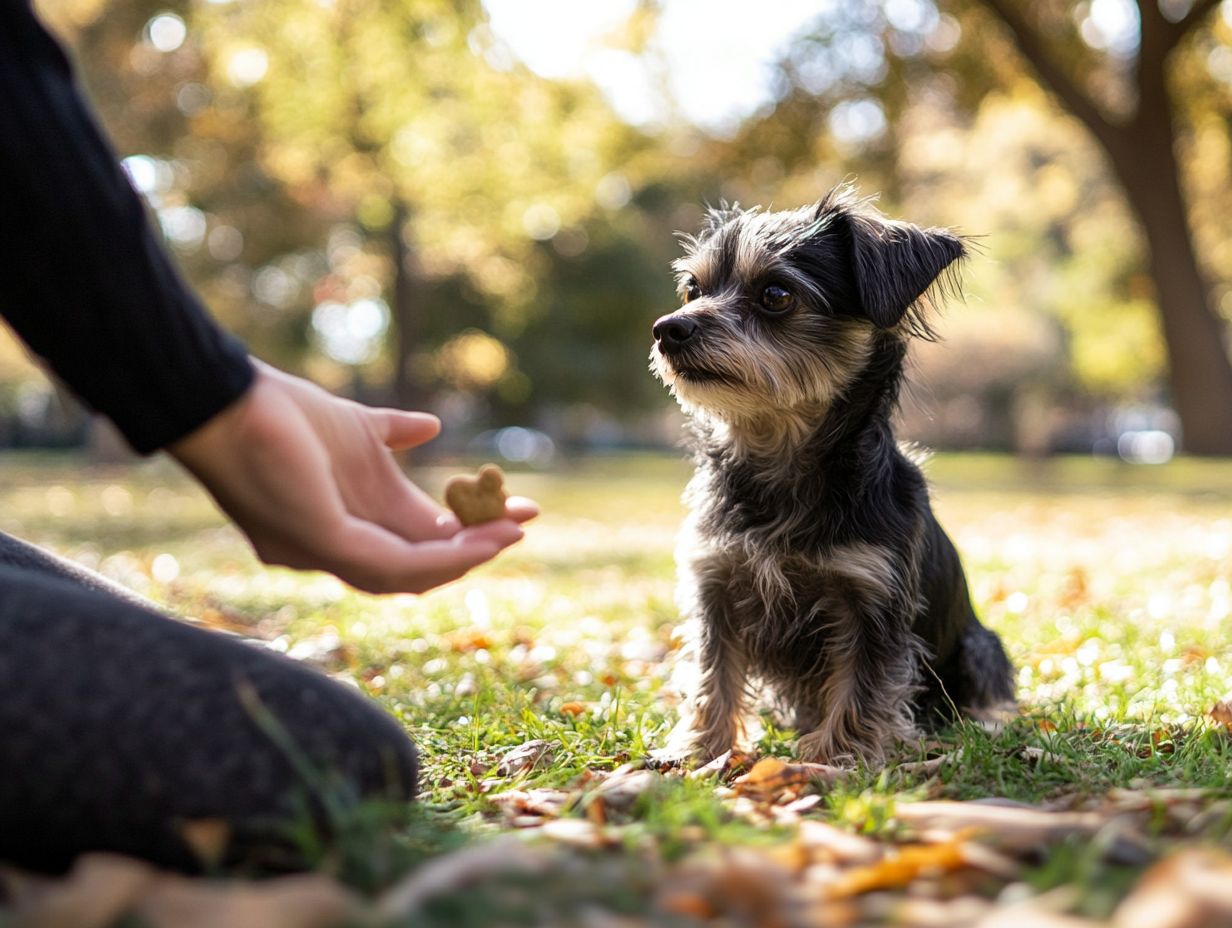
Selecting the right rewards for your anxious dog is crucial for effective training. It fosters learning and enhances comfort while minimizing stress. Each dog has unique responses to different types of rewards. Understanding your dog’s preferences can greatly impact their motivation and training success. For more guidance, consider these tips for training anxious pets at home.
Treats are often a favorite, providing an immediate and gratifying reward. Additionally, toys can offer engaging playtime that alleviates anxiety and reinforces desirable behaviors. To further enhance your training sessions, consider using techniques to calm anxious pets before training, as thoughtfully choosing the right rewards cultivates a supportive training environment that encourages learning and growth.
Types of Rewards and Their Benefits
You can utilize various types of rewards in training, such as treats, toys like fetch toys and tug toys, and verbal praise. Each has unique benefits to enhance your dog’s learning and behavior modification, especially when combined with desensitization training for anxious pets.
Treats provide instant gratification, making a significant difference when teaching new commands or reinforcing positive behavior. They capture attention quickly, making them highly effective in the moment.
Toys also elevate the play experience, bringing excitement and engagement. Fetch toys stimulate physical exercise and mental alertness, while tug toys encourage interactive play and strengthen your bond with your dog.
Tailor your rewards to fit your dog s play style for maximum fun and learning!
Creating a Reward-Based Training Plan
Ready to boost your dog training? A reward-based plan is your key to success! This approach emphasizes structured and consistent techniques that enhance both behavior and communication, and understanding the benefits of professional training for anxious pets can further support your efforts.
A thoughtfully crafted plan considers your dog s unique personality, learning style, and specific training goals. This ensures a personalized strategy that maximizes effectiveness. By incorporating a variety of rewards, like treats and toys, along with ways to reward good behavior, you can effectively motivate your dog during training sessions.
Consistency is crucial for establishing long-term success and fostering a strong bond.
Step-by-Step Guide to Training with Rewards
A step-by-step guide to training with rewards offers clarity and structure. This makes it easier to implement effective techniques that encourage positive behaviors in your dog, including the role of trust in training anxious pets.
Recognizing that each dog, including breeds like Border Collies and Belgian Malinois, is unique, this guide breaks down the training process into manageable stages. You ll learn how to establish clear commands that are simple and specific.
As you progress, the importance of consistency will come into focus. Regular practice and repeated cues can solidify learning. Positive reinforcement is vital; rewarding desired actions with treats or praise encourages good behavior.
You’ll also find tips on modifying techniques to suit your dog’s personality or learning pace. This further enriches the training experience and fosters a harmonious bond between you and your dog.
Dealing with Setbacks and Challenges
Navigating setbacks and challenges in dog training is a journey many owners encounter. It highlights the critical role of sticking with it and being flexible in crafting effective training strategies.
Recognizing that not every session will unfold as envisioned allows you to maintain patience and stay focused on your long-term goals. By pinpointing specific issues, like distractions during sessions or a lack of motivation, you can use targeted troubleshooting techniques to skillfully overcome these hurdles.
Cultivating a positive mindset and sticking to consistent training routines will help you overcome challenges. This fosters continuous progress in shaping the behaviors you desire.
Troubleshooting Tips for Difficult Cases
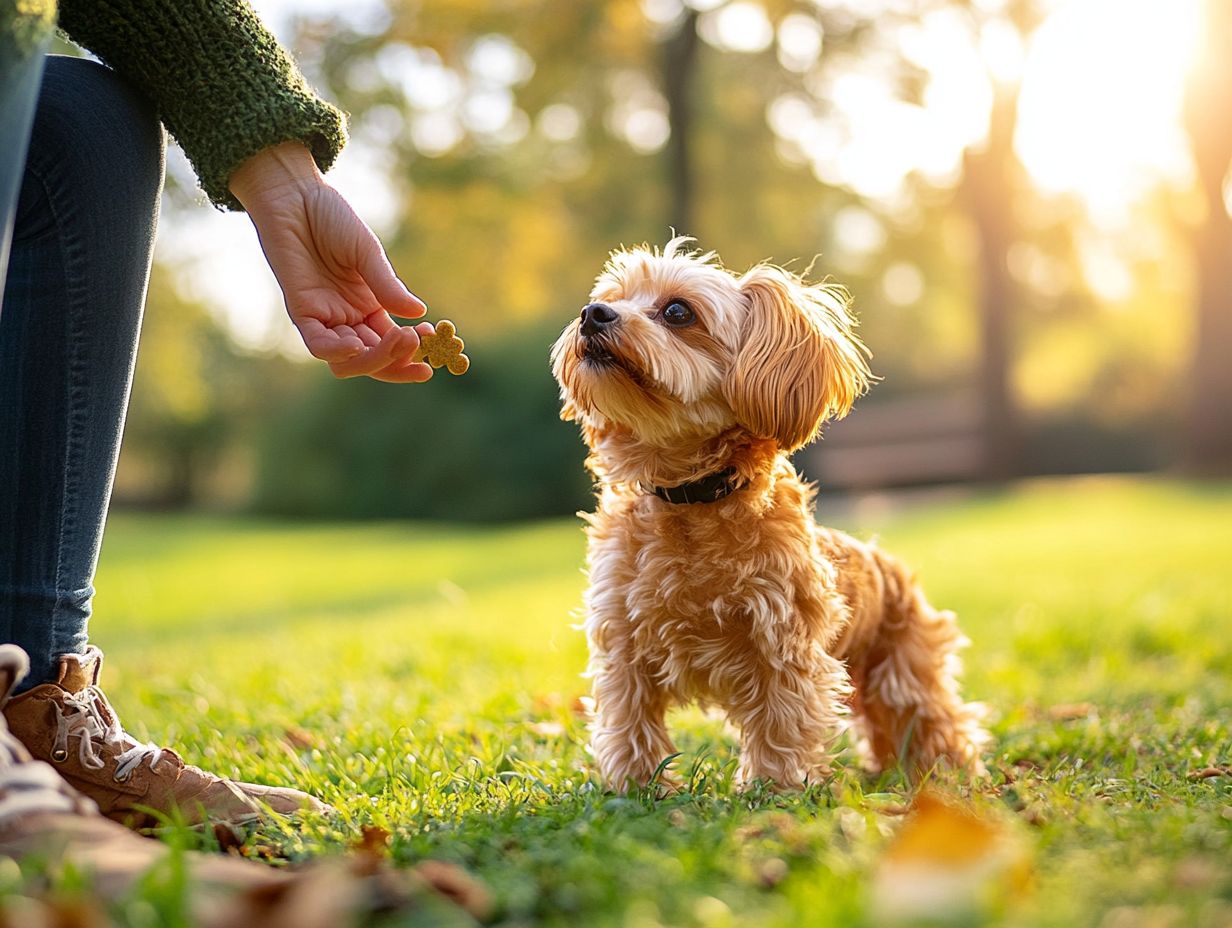
Troubleshooting tips for challenging situations in dog training give you the tools needed to tackle difficult behaviors and enhance your training outcomes.
These strategies enable you to customize your approach. Incorporate fun playtime or use a clicker based on your dog’s unique needs. If your dog feels anxious during training, gradually introduce new commands in a calm environment to help foster a sense of security.
Distractions often derail focus. To build your dog’s resilience, slowly increase the complexity of the training environment. If your dog resists commands, incorporate play as a reward or use high-value treats to significantly boost motivation.
By keenly observing your dog s unique responses and adjusting your routines accordingly, you can create a more positive and productive training experience.
Maintaining Positive Reinforcement in the Long Term
Maintaining positive reinforcement over the long haul is crucial for ensuring your dog’s training success. Keep those rewards coming to keep your dog excited!
As your dog learns commands and skills, it s essential to keep the rewards flowing to motivate them. Regularly introducing new techniques and mixing up rewards whether treats or toys can elevate the training experience and prevent it from becoming dull.
By cultivating a positive learning environment, you can ensure your dog stays excited about training for years to come.
How to Continue Using Rewards for Ongoing Training
Continuing to use rewards for ongoing training is vital for reinforcing learned behaviors. This keeps your dog motivated during training sessions, especially with training techniques to manage aggression in anxious pets.
As you progress in your training journey, remember that your techniques should evolve to maintain interest and offer the right level of challenge. Diversifying rewards can greatly enhance this process. Consider alternating between treats, toys, and verbal praise to keep things fresh and exciting for your dog.
Recognizing the impact of positive reinforcement on long-term behavior modification is essential. It nurtures a lasting connection between effort and reward. By consistently applying strategies like clicker training a small device that makes a sound to mark a desired behavior you can create a more engaged and responsive learning environment for your dog. This ultimately leads to improved outcomes and a stronger bond.
Frequently Asked Questions
How can I use rewards to train my anxious pet?
Using rewards is a great way to train anxious pets. It helps create a positive association with the desired behavior. Start by finding a high-value reward, such as a favorite treat or a KONG Wubba. Give it to your pet immediately after they display the desired behavior. For more insights, check out understanding positive reinforcement for anxious pets. This will reinforce the behavior and make your pet more likely to repeat it in the future.
What are some examples of rewards I can use to train my anxious pet?
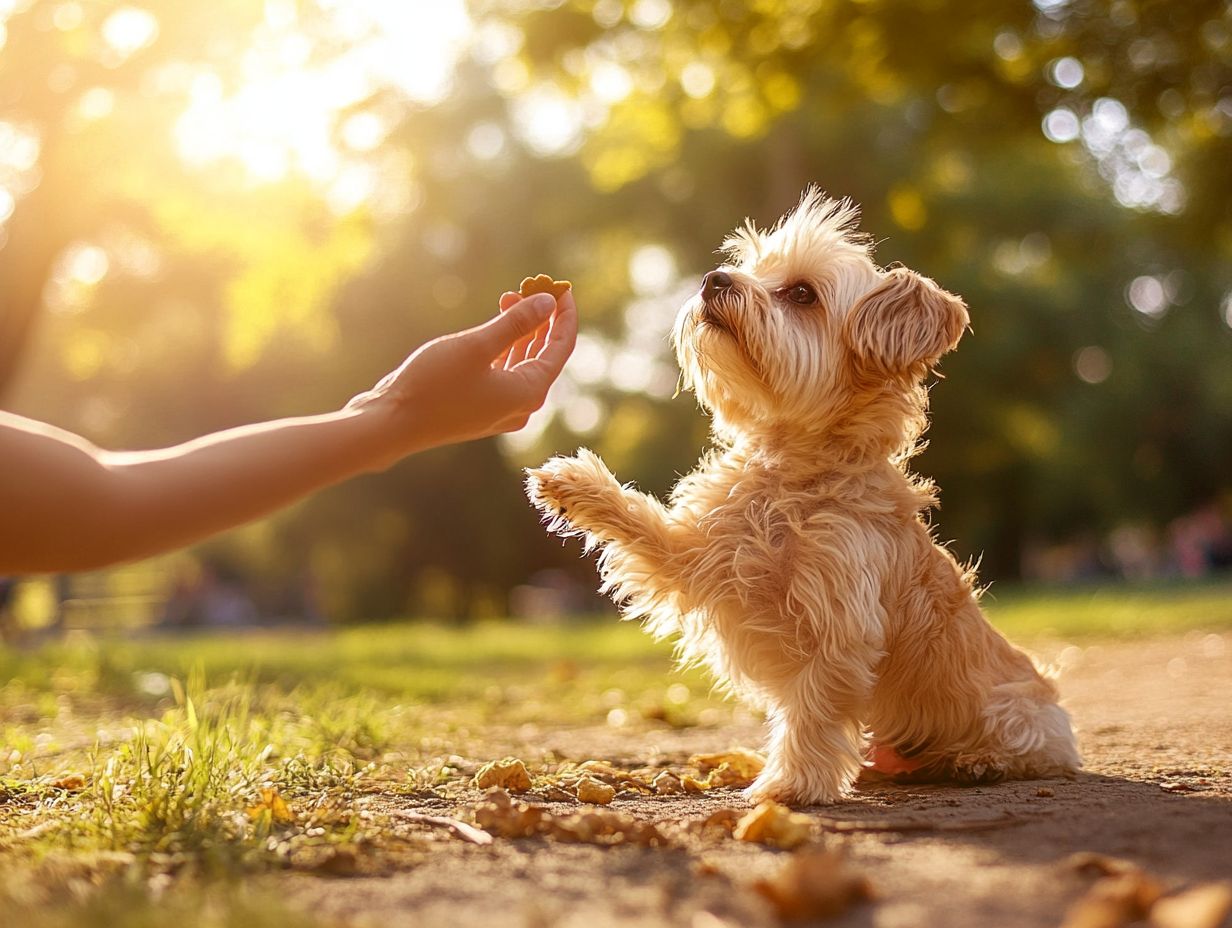
The type of reward depends on your pet’s likes. Popular options include treats, praise, playtime, or a favorite toy. Experiment to discover what excites your pet!
How often should I reward my anxious pet during training?
Consistency is crucial. Give a reward each time your pet shows the desired behavior to boost their motivation.
What should I do if my anxious pet doesn’t seem interested in the reward?
If your pet ignores the reward, it might not be appealing enough. Switch to a more exciting toy or break the treat into smaller pieces to give more frequently.
Can I use rewards to train my anxious pet to overcome specific fears?
Yes! You can help your pet face fears using rewards. Gradually expose them to what scares them while rewarding calm behavior, like play. Consider using scent training to calm anxious pets for added support.
Is it possible to rely too much on rewards when training anxious pets?
Rewards are great, but don’t depend on them entirely. As your pet gets comfortable, consider incorporating techniques for training anxious senior pets by replacing treats with praise to encourage lasting changes.

